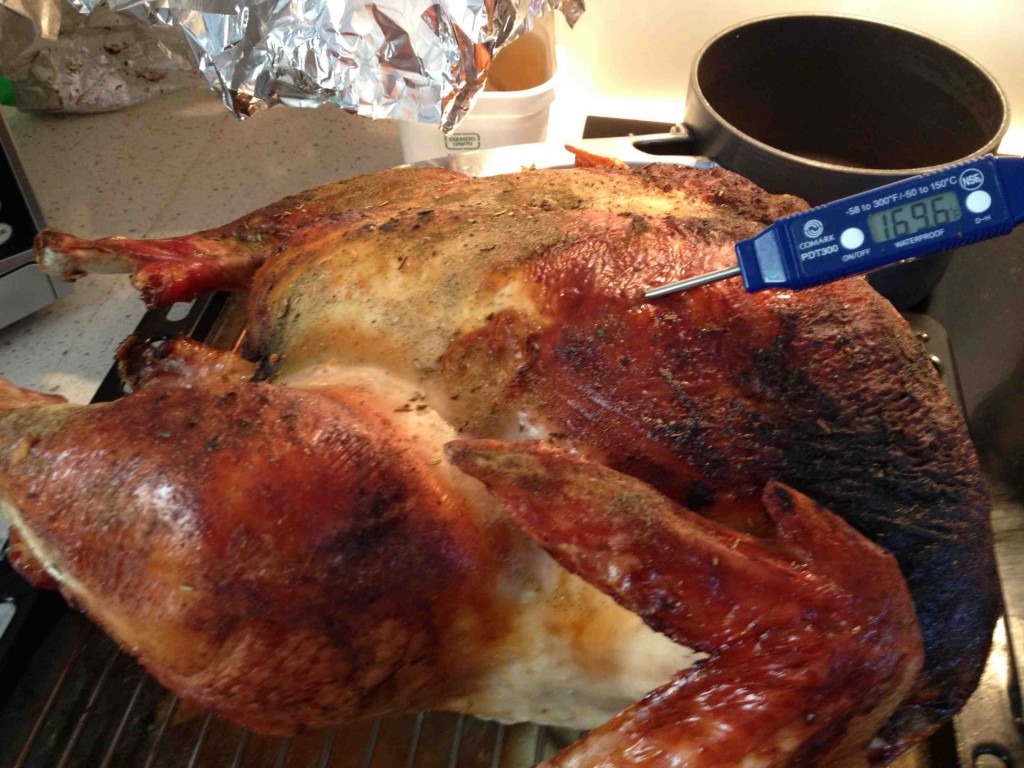One hour to show time for 25 Australian friends. Looking not bad. More later.
Tag Archives: Turkey
Mancini knows cross-contamination
Actors may not know cross-contamination, but former TV heartthrob, about to be famous scientific author (more about that later), Kansas State MS grad and  Winnipeg health inspector Rob Mancini proved he knows his stuff as he hammered home the importance of cross-contamination on CityTV the other day.
Winnipeg health inspector Rob Mancini proved he knows his stuff as he hammered home the importance of cross-contamination on CityTV the other day.
The video is at:
http://video.citytv.com/video/detail/1877249789001.000000/thanksgiving-food-preperation/
Over 80 tourists suffer food poisoning in Turkey
Some 83 tourists were hospitalized Wednesday due to an outbreak of food poisoning in the seaside city of Bodrum, about 790 km south of Turkey’s Istanbul.
 A provincial health director said that the tourists had been diagnosed with nausea and heavy stomach aches.
A provincial health director said that the tourists had been diagnosed with nausea and heavy stomach aches.
Officials from Food, Agriculture and Animal Breeding ministry took samples of the food and drinks that the tourists might have consumed.
Poultry or smoked fish and sprouts? Yes, I remember, I had lasagna; E. coli O104 in French travelers to Turkey
I look forward to Thursdays because a new issue of Eurosurveillance appears and they always have outbreak summaries of interest.
French health-types report eight cases of diarrhea, including two cases of hemolytic uremic syndrome (HUS), identified among 22 French tourists who travelled to Turkey in September 2011. A strain of Escherichia coli O104:H4 stx2-positive,eae-negative, hlyA-negative, aggR-positive, ESBL-.jpg) negative was isolated from one HUS case. Molecular analyses show this strain to be genetically similar but not indistinguishable from the E. coli O104:H4 2011 outbreak strain of France and Germany.
negative was isolated from one HUS case. Molecular analyses show this strain to be genetically similar but not indistinguishable from the E. coli O104:H4 2011 outbreak strain of France and Germany.
Although the source of infection was not identified, the authors concluded the HUS cases had probably been infected in Turkey but there was no evidence to link this STEC O104:H4 outbreak to the consumption of fenugreek sprouts, as was the case for the German and French outbreaks in May to June 2011. None of the 22 travel group members reported the consumption of sprouts before and during their trip to Turkey.
Except that over there, sprouts are added to everything, more so than a Jimmy John’s sandwich.
Turkey is among several destinations where European tourists had previously travelled before developing STEC O104 infection between 2004 and 2009 (n=4), along with Afghanistan, Egypt and Tunisia. This outbreak supports data suggesting that the STEC serogroup O104 circulates in these areas. Further evidence is provided by the three additional cases that were subsequently identified in Germany and Denmark among persons also returning from Turkey within the same approximate .jpg) time frame. Public health authorities and clinicians should be vigilant for possible STEC O104 infection in individuals returning from these areas who present with post-diarrheal HUS.
time frame. Public health authorities and clinicians should be vigilant for possible STEC O104 infection in individuals returning from these areas who present with post-diarrheal HUS.
The complete paper is available at http://www.eurosurveillance.org/ViewArticle.aspx?ArticleId=20065.
Outbreak of haemolytic uraemic syndrome due to Shiga toxin-producing Escherichia coli O104:H4 among tourists returning from Turkey, September 2011
26.jan.12
Eurosurveillance, Volume 17, Issue 4
N Jourdan-da Silva, M Watrin, F X Weill, L A King , M Gouali, A Mailles, D van Cauteren, M Bataille, S Guettier, C Castrale, P Henry, P Mariani, V Vaillant, H de Valk
Cross-contamination alert; how not to season a turkey
From some dude’s blog, self-described as a reminder of “how little I do and how pointless my life is, ” comes this picture of how not to season a turkey.
The author writes, “The meals began on Thanksgiving Day Eve, also known as Wednesday. M invited a variety of foodies, J and I over to her flat for an early dinner. The meal consisted of the 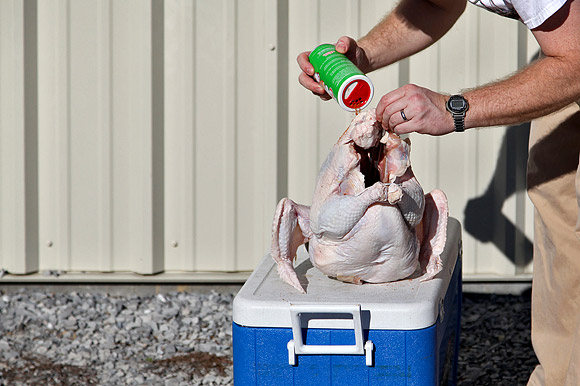 staples, though prepared in fresh and healthy ways. …
staples, though prepared in fresh and healthy ways. …
“Conversation topics: food, more food, France, the world, startups, renting in SF, ghosts.
“A French couple was there, and it was their first Thanksgiving. Hopefully the impression was positive.”
Hopefully they didn’t suffer bouts of barfing from salmonella or campylobacter that could easily have been part of the health ways preparation. These foodies need Ted Allen’s book.
Cook that frozen turkey, it’ll take longer, try not to kill relatives
Roasting a frozen bird can produce a better turkey.
And many food safety types agree.
Elizabeth Weise of USA Today writes the technique involves a hot oven, an icy bird and six hours to hang out with your relatives.
While the technique turns out not to be new, it’s gaining traction because of a Web publication outlining how to do it by Pete Snyder of the Hospitality Institute of Technology and Management, which does safety training for food companies.
"The breast is still moist and the dark meat is still tender," Snyder says from his office in St. Paul. It’s also excellent for food safety "because you didn’t drip that nasty turkey juice on everything in 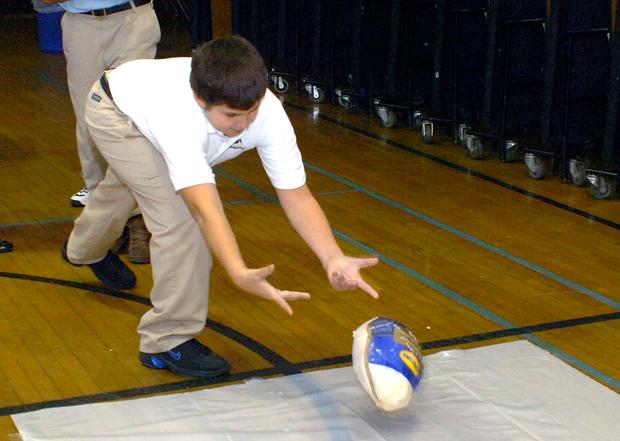 the refrigerator for four days."
the refrigerator for four days."
Donald Schaffner, a food microbiologist at Rutgers University in New Brunswick, N.J., says from a safety perspective Snyder’s right. "A frozen turkey is going to spread less contamination around your kitchen than a thawed turkey."
Snyder tested the technique because "I had been one of those people that had woken up at 7:30 in the morning and the turkey was still frozen." But being a food-safety professional, he decided to throw in a few temperature-measuring thermocouplers.
He placed them at various points on multiple frozen turkeys as they roasted. What was happening in the oven, he found, was "the first half of the cooking period thaws the turkey and then the second half roasts it," he says.
His technique is simple:
Take one frozen turkey, 12 to 13 pounds.
Place a low wire rack on a cookie sheet with low sides.
Remove the plastic cover from the turkey.
Put the turkey on the rack.
Put it in a 325-degree oven.
Wait 4½ to five hours.
Eat.
Snyder recommends using a cookie sheet or another baking sheet with a low rim, not a high-sided roasting pan. "You want the hot oven air to evenly circulate all around the turkey," he says.
He also recommends putting the turkey on a rack on the pan so that the hot air can circulate underneath, as well.
The U.S. Department of Agriculture’s food-safety experts agree with Snyder. Kathy Bernard of USDA’s Meat and Poultry Hotline says "you can cook a turkey from a frozen state, the only thing you need to know is that it takes one and a half times longer to cook" than a thawed bird.
The technique is well known to the folks on the Butterball Turkey Talk-line. They get "lots" of calls on the topic Thanksgiving morning, says Carol Miller. She has been answering frantic questions for 27 years out of the Naperville, Ill., office.
The ideal final temperatures for the turkey is 160 degrees at the breast and 185 for the legs. But Snyder doesn’t think a thermometer is necessary because you can tell when the leg has reached  185 because "it will wiggle back and forth really easily" because the connective tissues will have begun to dissolve at that temperature, he says.
185 because "it will wiggle back and forth really easily" because the connective tissues will have begun to dissolve at that temperature, he says.
USDA isn’t so keen on the "wigging the leg" method of testing for doneness. "You need to use your food thermometer, you need to make sure the turkey should register 165 in the innermost part of thigh and the thickest part of the breast," Bernard says.
Butterball’s Miller says this is the time to canvass the neighborhood. "You really need a meat thermometer. If you don’t have one, give a guest a call and see if they can bring one. Or go to a convenience store. Or knock on a neighbor’s door."
The one area where Snyder and other turkey experts differ is on the matter of the neck and giblets, which in most commercially prepared turkeys will be placed in the neck and body cavity.
Snyder says that after about 2½ to three hours the turkey will have thawed enough that you can "carefully" pull them out of the warming bird to start to make stock. "You can leave them in, but then you don’t have them for the gravy," he says.
Butterball’s Miller disagrees. The bag they come is "designed to go through that heating process, so that’s not a problem." Trying to remove a slippery bag tucked deep in a turkey straight out of a hot oven — especially when everyone’s stressed about getting things done on time — just isn’t necessary. "They’re just as happy staying right where they are. That’s our recommendation and we’ve been doing this for 30 years."
The one thing you can’t do with a frozen turkey is deep fry it, because the frozen liquid can cause the oil to boil over, Snyder says. "That would be very, very dangerous."
Less vomit, more cheer: Top 5 ways to a barf-free Thanksgiving

Tips for a food safe Thanksgiving dinner are popping up, so Chapman and I, always eager to jump on a bandwagon, came up with our own.
1. Never wash the Thanksgiving turkey. Research from the U.K. and elsewhere shows that washing turkey or chicken is an ideal way to spread dangerous bacteria throughout the kitchen .jpg) or food preparation area. Washing under running water can spray surface contamination up to three feet away.
or food preparation area. Washing under running water can spray surface contamination up to three feet away.
2. Never place a whole turkey over your head. While it may be a popular attempt at comedy in movies and television shows like “Mr. Bean” or “Friends,” do not inspect the internal cavity of the turkey by placing it over your head. This is potentially the most contaminated part of the turkey.
3. Make sure to use a tip-sensitive digital thermometer to ensure the turkey has reached 165 F. Color is an inadequate indicator of safety so always use a thermometer to test the turkey before serving.
4. Cool leftover turkey quickly. Refrigerate leftover turkey within two hours of taking it out of the oven. Some spore-forming bacteria will grow and form toxins if kept at room temperature for too long. Turkey should be cooled to 41 F quickly and this is best accomplished by placing sliced leftover turkey in reseal-able bags of one quart or smaller size. Bags should be laid flat in the refrigerator to allow cool air to circulate.
5. Do not pass babies with leaky diapers around the holiday table. This can lead to all kinds of food contamination, and does not end well for anyone at the table.
A table of holiday-meal related outbreaks is available at http://bites.ksu.edu/turkey-related-outbreaks.
.jpg)
42 sick with salmonella in 6 states from Turkish pine nuts
Who doesn’t like a pine nut; an excellent addition to sauted spinach, fresh salad or pesto.
Except when the nuts are carrying salmonella, posing a raw consumption and cross-contamination risk in the kitchen.
The U.S. Centers for Disease Control announced today it is collaborating with public health and agriculture officials in New York and other states and the U.S. Food and Drug Administration (FDA) to investigate a multistate outbreak of Salmonella Enteritidis infections linked to Turkish pine nuts purchased from bulk bins at Wegmans grocery stores.
A total of 42 individuals infected with the outbreak strain of Salmonella Enteritidis have been reported from 6 states.
Among 42 persons for whom information is available, illnesses began on or after August 20, 2011. Ill persons range in age from <1 to 94 years, and the median age is 43 years old. Fifty-seven 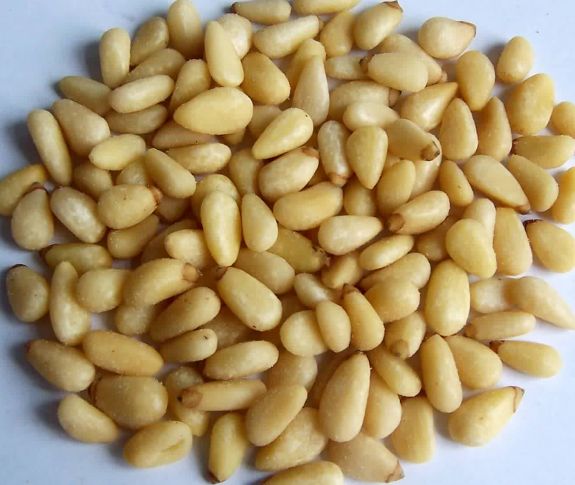 percent of patients are female. Two patients were hospitalized. No deaths have been reported.
percent of patients are female. Two patients were hospitalized. No deaths have been reported.
Epidemiologic and laboratory investigations conducted by officials in local, state, and federal public health, agriculture, and regulatory agencies linked this outbreak to eating Turkish pine nuts sold in bulk bins at Wegmans grocery stores. Some Turkish pine nuts were consumed as an ingredient in prepared foods, such as Caprese salad or asparagus with pine nuts, sold at Wegmans stores. These pine nuts are imported from Turkey, but may not have originated there.
Early in the investigation, shopper card information was collected and used to identify which specific products to suspect as sources of illness. Ill persons gave permission for public health officials to retrieve shopper card purchase information. A review of shopper card records identified that ill persons had purchased the same type of Turkish pine nuts from bulk bins at different locations of Wegmans grocery stores before becoming ill.
Laboratory testing conducted by the Virginia Division of Consolidated Laboratory Services isolated the outbreak strain of Salmonella Enteritidis from Turkish pine nuts that were purchased from bulk bins at Wegmans stores and collected from an ill person’s home. The Virginia Division of Consolidated Laboratory Services also isolated the outbreak strain of Salmonella Enteritidis from retail samples of Turkish pine nuts collected from a Wegmans store where ill persons reported shopping. Laboratory testing conducted by the New York State Department of Health, Wadsworth Center Laboratory, isolated SalmonellaEnteritidis from two separate samples of homemade pesto containing Turkish pine nuts from two unrelated ill persons’ homes, and from Turkish pine nuts which were purchased from bulk bins at a Wegmans store and collected from another ill person’s home. Both samples of homemade pesto have been tested and it is determined the Salmonella in these pine nuts is also the outbreak strain.
A (thermometer-verified) Canadian Thanksgiving in Australia
I’ve got turkeys wandering around the yard but I can’t buy one at the grocer or butcher.
Paul the butcher in Annerley, Brisbane, Australia, took pity on me and gave me – gave me for free – a frozen turkey breast he had in his freezer.
“If it sucks, throw it out.”
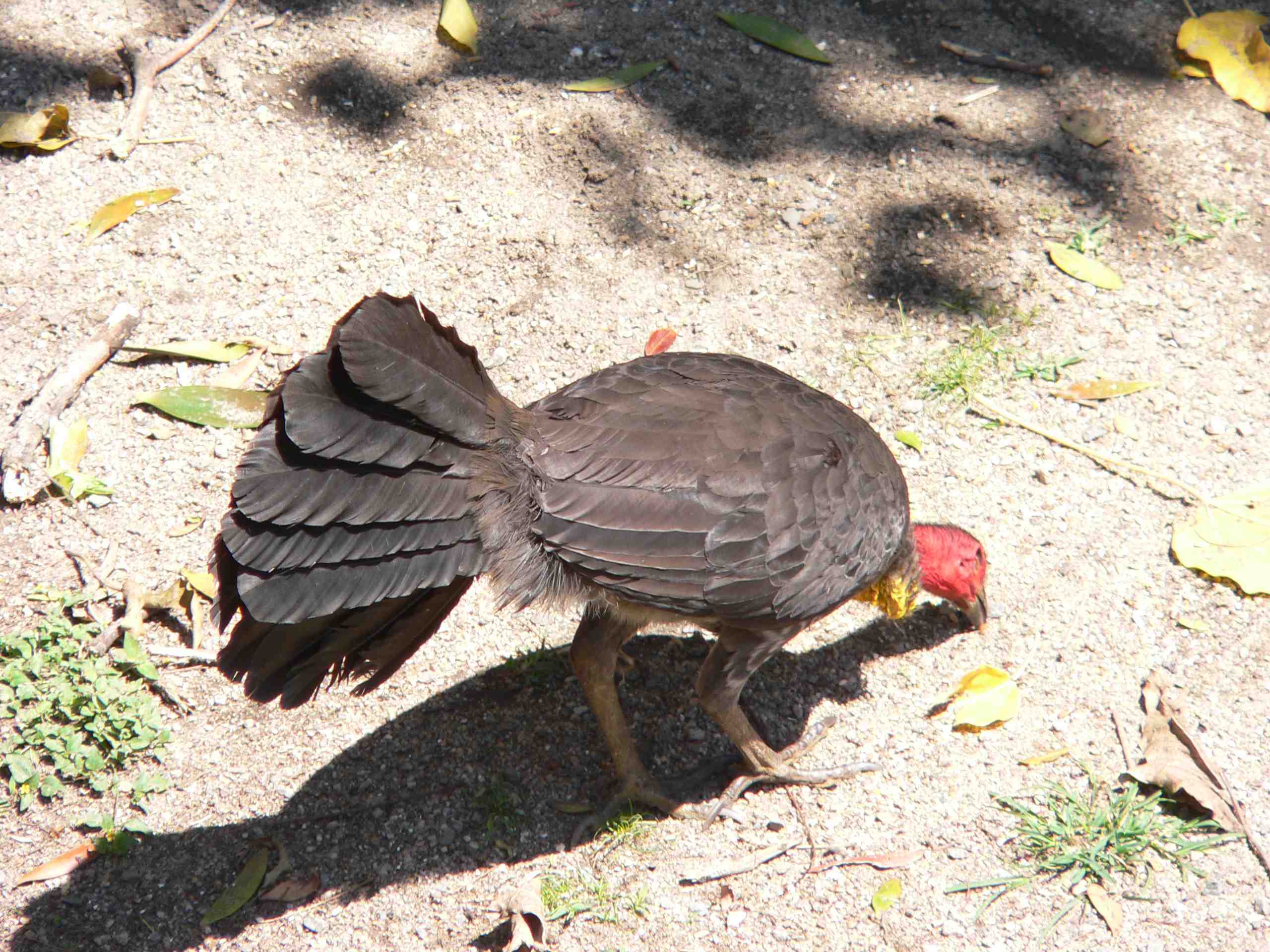 I threw it out.
I threw it out.
Paul says he does a lot of turkeys for Christmas, but Thanksgiving just isn’t an Australian thing.
And it’s sorta weird, with spring strawberries and asparagus abundant rather than the traditional North American harvest foods.
Was even weirder prepping food all morning while Amy played with Sorenne and listened to the K-State football game on Internet radio.
But, we continued our tradition and had some 15 Aussies over for a Canadian Thanksgiving feast.
And instead of North American football, there was the 2011 Rugby World Cup quarterfinals: yeah Wales (suck it Ireland); France will lose next weekend to Wales; yeah Australia (suck it South Africa), and in a few hours it should be yeah New Zealand (suck it Argentina).
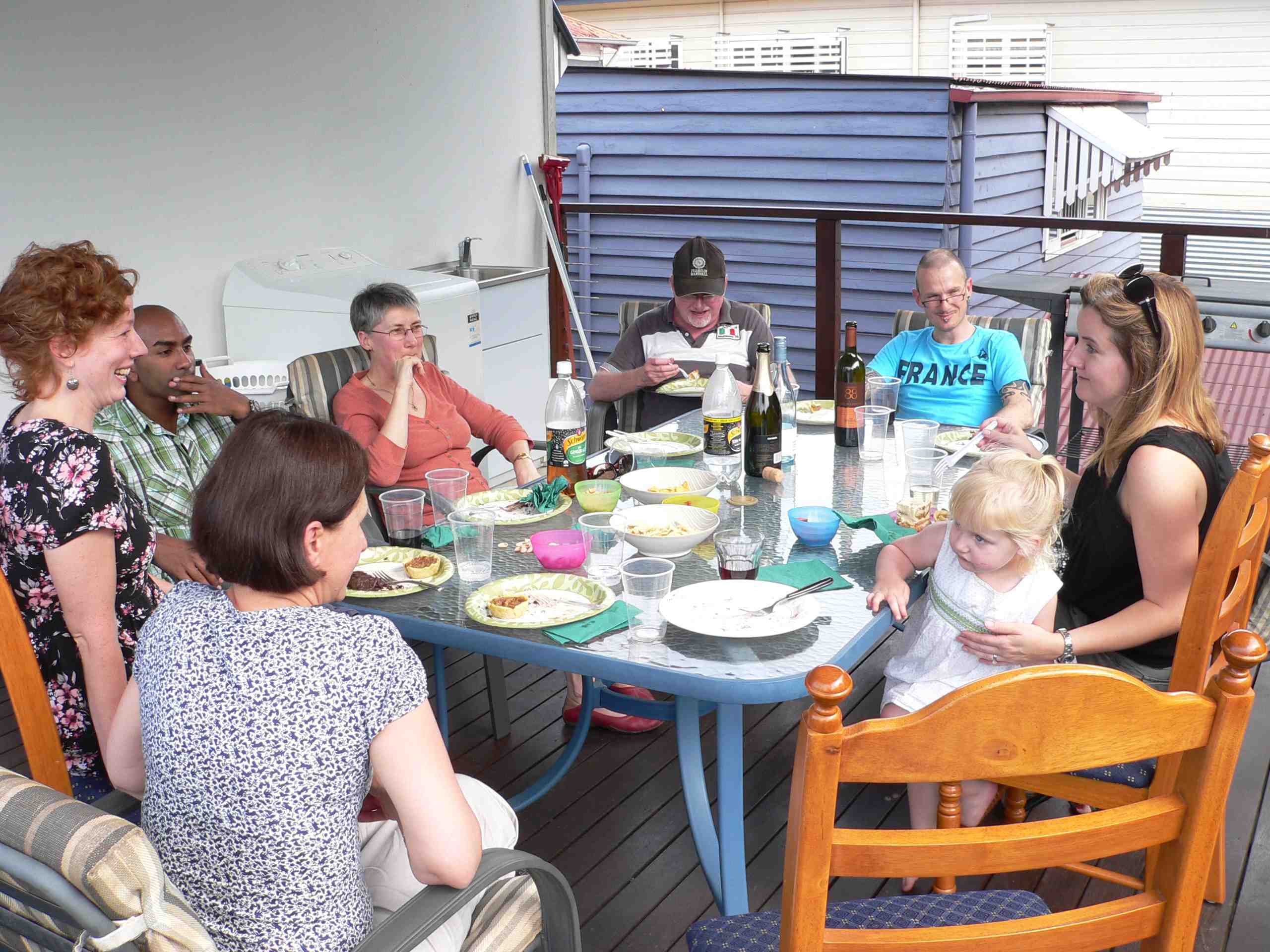
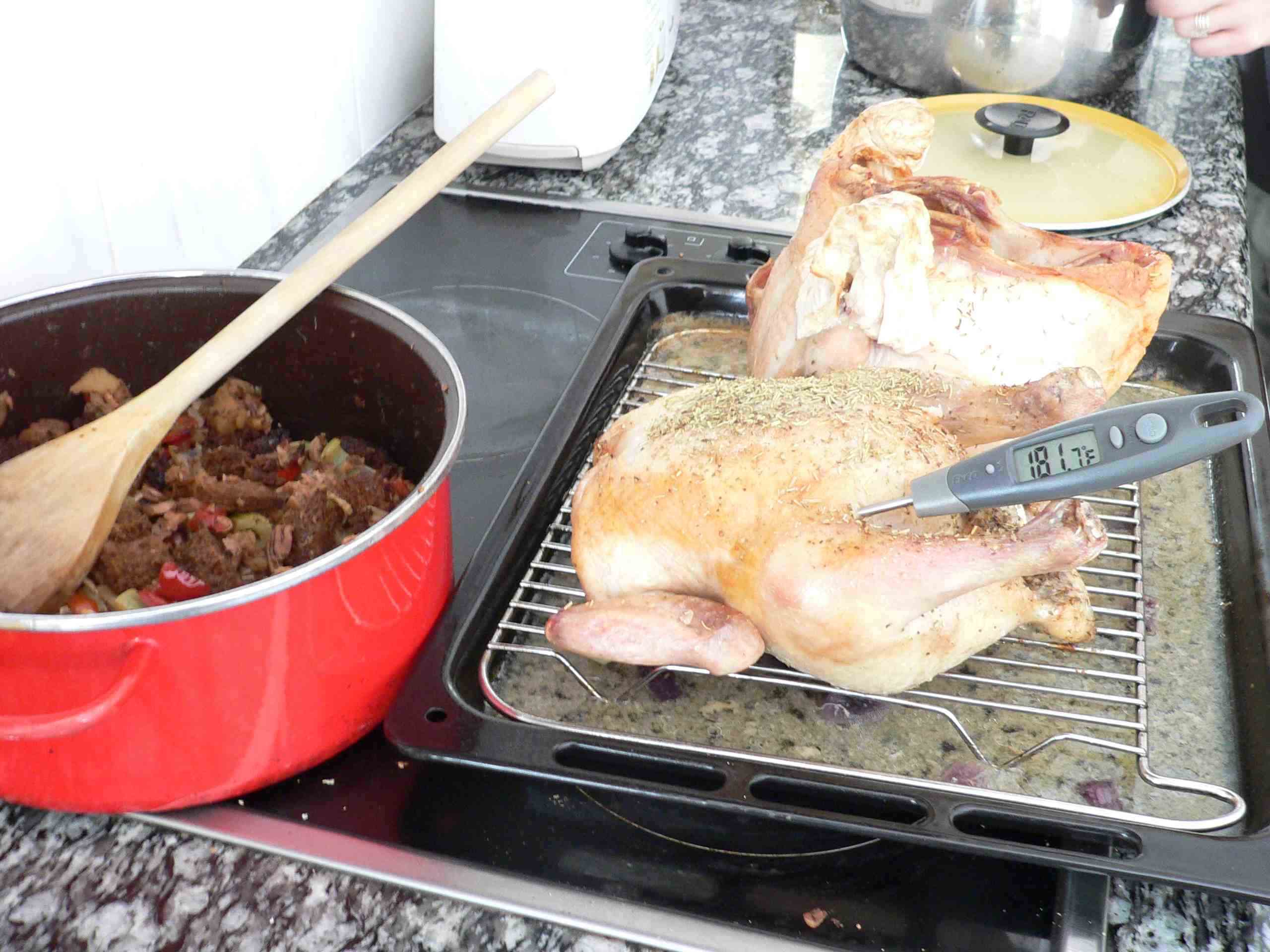
Two weeks in Australia, still no meat thermometer
 I used to cook. And then I met Doug. And all the food safety that I quickly learned scared me.
I used to cook. And then I met Doug. And all the food safety that I quickly learned scared me.
It’s no secret that Doug does all the cooking in our family. So now that Sorenne and I are in Australia patiently awaiting his arrival, I’ve cooked several frightening meals. I have no way of knowing if the chicken, sausage, or beef are going to kill us. I’ve looked for meat thermometers rather seriously at different major stores here and the only one I’ve seen was at Target – a ridiculously large round display on top of a probe. Think American turkey thermometer that comes out only at Thanksgiving and magnify the size by about 5. I tried again at Coles tonight… nada.
 For dinner tonight I opted for pre-made raw meatballs to accompany the linguine because having a small child around is not conducive to getting up to your elbows in meat (especially when she’s screaming, “Mooooooom! Milk!”). I did my best to make a well-done meatball (I mean, who doesn’t love crispy meatballs), but how are mere mortals supposed to see if something’s cooked just by using our naked eyeballs?
For dinner tonight I opted for pre-made raw meatballs to accompany the linguine because having a small child around is not conducive to getting up to your elbows in meat (especially when she’s screaming, “Mooooooom! Milk!”). I did my best to make a well-done meatball (I mean, who doesn’t love crispy meatballs), but how are mere mortals supposed to see if something’s cooked just by using our naked eyeballs?
 Come on, Australia. Food safety is not just an American thing. I’m tired of worrying whether I’ll kill our 2 ½ year old over dinner. And I miss my favorite food safety expert’s voice in my ear reminding me to use a meat thermometer.
Come on, Australia. Food safety is not just an American thing. I’m tired of worrying whether I’ll kill our 2 ½ year old over dinner. And I miss my favorite food safety expert’s voice in my ear reminding me to use a meat thermometer.

